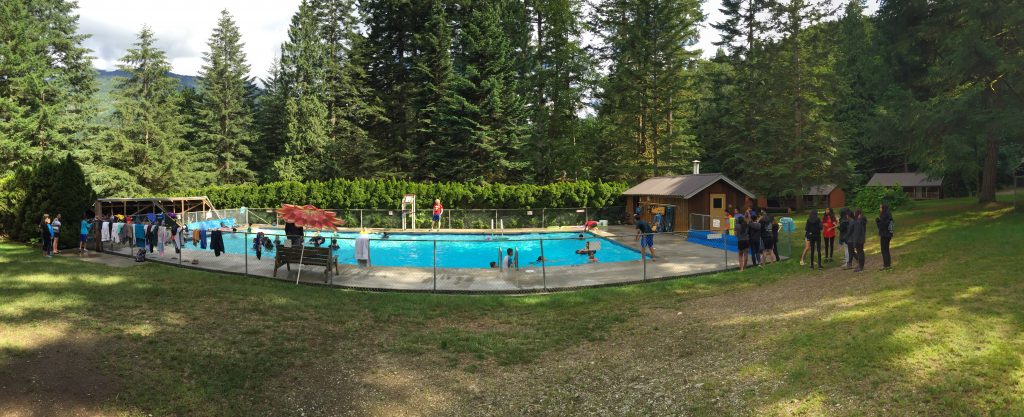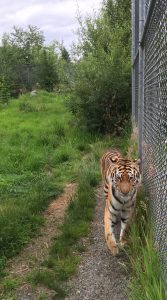Over the past three weeks, which have gone by in a flash, I have had the privilege a great deal of good, solid educational practice. I have seen firsthand the impact that carefully planning, clear expectations, precise execution, and a meaningful reflection back can have on educational experiences outside the traditional norm of a classroom. For me, something that has stuck out in this whole process is that the content is nothing without the delivery. Very little can replace good modelling and there is no true substitute for expectations, both in relation to content knowledge and behaviour.
Something I have truly seen value in over my community field experience here at the Greater Vancouver Zoo and out at Camp Squeah, is the impact proper modelling can have. At camp, this was obvious. Especially in a new environment showing, actually showing, the students how to behave to ensure safety, structure, and fun is so very crucial. When the students were rock climbing, showing them that yes it can be scary but it is so much fun when you get on that wall, so much fun to take that risk, and so rewarding to complete it. This transfers to them the confidence to try. Modelling this confidence (whether you feel it or not) shows them that if you the teacher are willing to take the risk, so can they. Modelling encouragement for other students when they a participating in activities encourages the student to be encouraging towards each other. It is a cycle of encouragement. This is encouraging to see (ok I’m done with the word encourage). Through this, we see that this is connected to both the behaviour of your students but also the relationships that are created. Now this is obvious in the camp setting as the nature of camp strips away the layers of analogy and everything is much more literal (see my previous post), but the power of modelling can also exist in a setting like leading a tour at the zoo. In this scenario, modelling is important for the students as it allows them to make the most of the experience. Sure you could just lead the tour, giving information about particular animals and answering the odd question, but are the students going to connect to the information this way? No. However, if you can take the time to model the process of inquiry for the students, questioning and then discussing, formulating answers and sharing them, the impact on the students is tremendous. During my tours, finding time to model this and then allow the students time to do this themselves made a huge difference. By telling and then showing them how this works, the connections the students make the to the content were significant. They are being talkative. They are very excited. But all this noise is good. They are engaging their peers in questions and answers about the animals. They are enthusiastic, engaged, and using critical thinking. As an educator, this feels good. And how did I achieve this blissful state of scientific inquiry? Giving them the space to do so and modelling the skills/prices they will use.
But expectations are also important. I know we have discussed them at length in theory classes. Placing the expectations in the hands of the students so they know what is appropriate and what is not. However, these expectations are often misshaped and distorted to resemble expectation’s negative cousin: RULES. They are not the same thing. Expectations have a quality that sets it apart from rules and is simply more effective. By explaining and modelling (see the connection to the first section? Educational mind blow!), expectations describe the WHY. I am expecting you to act this because of this reason. It is the because that is important as it allows the students to take ownership of these guidelines. For example, during my tours, I created a spiel about how all the students are my Jr. Zoologists and as Jr. Zoologists, we care for the animals by making sure the pay are getting the proper diet, making sure the animals feel safe, making sure the animals are comfortable, etc. And to do this, we have to make sure the animals don’t get any of our food, make sure we are giving them space by staying off the fences, and make sure we are quiet so the animals can live in peace. Much better expectations than the simple rules of no feeding the animals, no climbing on the fences, and no yelling at the animals. Upon anointing them my Jr. Zoologists, the ownership they took for the role and expectations for the role was remarkable. They were the perfect little scientists.
Overall, this is simply good practice. Both of these elements, modelling and expectations, is something every teacher should be doing in their classroom and out. It wasn’t the content that connected my students at the zoo and out at camp, it was the delivery. Yes animals are exciting and you would be hard pressed to find a primary student who wasn’t fascinated by these creatures. Camping is an exciting activity and the majority of my intermediate students found the whole activity engaging. However it is in the getting them to care about and connect to the material where we as teachers find difficulty and the two practices of modelling and setting clear expectations, do go a long way.
PS. Tigers don’t actually purr, they chuff which is loud and more car-engine like but the name was too good to pass up.

I will miss the view

